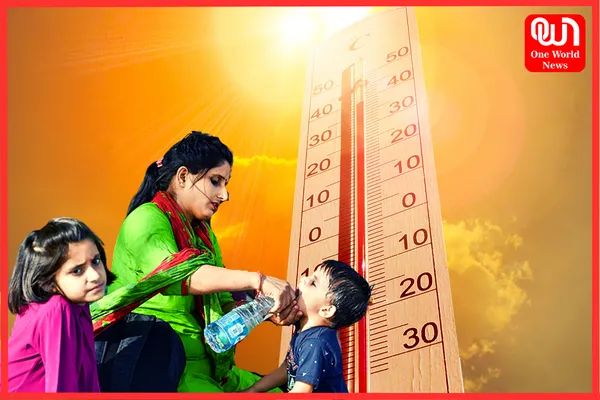
Winter gone too early; Delhi Heatwave strikes too soon
There was a time when one could expect winters in Delhi to last from November to early March, and we could still enjoy sweaters, warm drinks, and snuggling in the blanket. But, the past few years have seen shorter winters and hot days, even in winter.
On 20th February, Delhi recorded a temperature of 34-degree celsius. This is the third-highest temperature for February since 1969!
With such temperatures average in summers, it was not expected that winters would also get so hot. This is particularly interesting as just a few weeks ago, in the first week of January, Delhi recorded a temperature of three-degree Celsius, the lowest in the past two years.
Read More: Bone-chilling winters in Delhi: Records lowest temperature in 2 years
But why is Delhi so hot even in winters?
The primary reason that has led to such high temperatures is the absence of any active western disturbances in the region.
Western disturbances are low-pressure systems originating over the Mediterranean Sea and are responsible for bringing cold weather or rain to northern India. As these disturbances bring in cloudiness and overcast weather, their absence has led to direct sunlight over the area, making it hotter.
India Meteorological Department (IMD) scientist Kuldeep Srivastava said, “The wind speed has also been low, about 4-5 kmph. Besides, the city has been receiving warmer westerly and easterly winds, not the cold ones from the Himalayan region.”
With the absence of these disturbances, the warm spell is anticipated to continue for the next few days, and the temperatures might increase even more.
The other parts of India
The IMD, in its tweets, has also highlighted that the coming few days will see warmer day temperatures over northwest India and along “Konkan & Goa and Gujarat.” They also said that this high temperature would impact the production of wheat and other standing crops. As wheat is very sensitive to temperature and requires a cooler temperature during flowering and maturing, the high temperatures might lead to yield loss.
♦ However, the maximum temperature is likely to remain above normal over many part of the northwest west India by 5-7°C during next 03 days. 3/7
— India Meteorological Department (@Indiametdept) February 20, 2023
With such high temperatures, it is safe to assume that winter in Delhi was a short affair this year, and we can safely put away our winterwear and hope to have a better and longer winter next year.
Liked this post?
Register at One World News to never miss out on videos, celeb interviews, and best reads.








